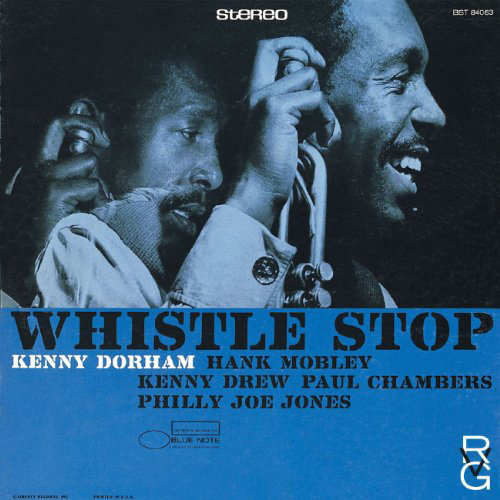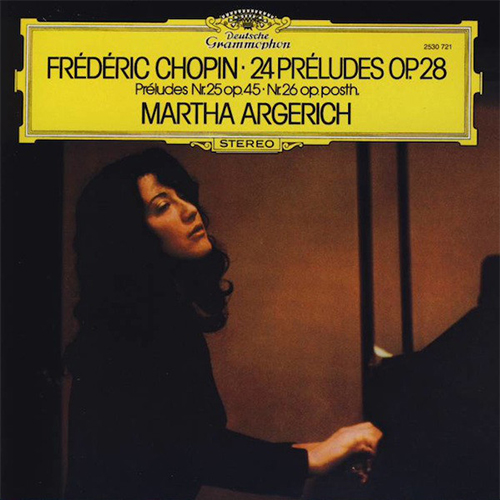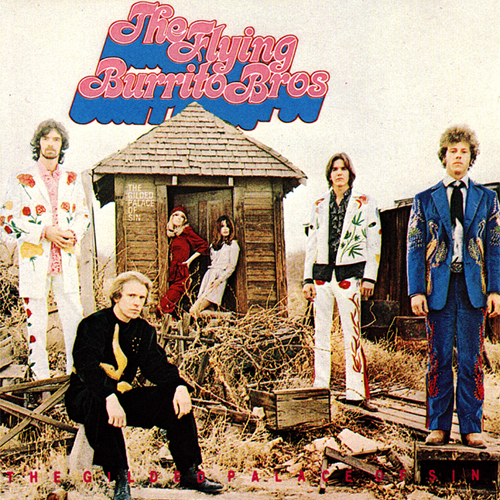
Timing is not my thing. But timing was not an issue for Philly Joe Jones or any of the other players on Kenny Dorham’s Whistle Stop record. My goodness. Since we’re approaching the finish line, let’s take an extra second to acknowledge them all, shall we? There was also Hank Mobley (sax), Kenny Drew (piano), and what appears, according to the gatefold portrait, to be a 10-years old version of Paul Chambers on bass. (He was closer to 25.) That’s a conglomeration of talent that managed to exceed the sum of its already astonishing parts on Whistle Stop. If it’s not on your radar, you need to put it there.
Secrets Sponsor
Even within the rarified air of MMJ’s Blue Note reissues, some titles breathe more fully and fly higher than others. Whistle Stop is one of those. Sonically, it stands beside Wayne Shorter’s brilliant Speak No Evil for clarity and depth. Emotionally, it stands on its own. There’s a quality to Mobley’s playing that I find especially moving. His records as band leader are classics too, and his pairing with Dorham makes for as formidable a horn combo as any I’ve heard. Their tandem intros often serve as launch pads from which one or the other takes flight, and they are not hard to parse. Mobley is hard right, Dorham all left. The two together make you feel like you’re on a magic carpet ride. Drew’s piano is so transparent that it seems like you should be able to hear his feet working the pedals. When Chambers bows a solo off mic, the change in sonics dramatically sets the stage for Jones’ drum work to kick the doors off the house when he comes home. That’s all within the span of one song. In the tradition of MMJ titles before, the pressing is pristine. At this point, I’m not sure why any audiophile company would work with any other plant. There are some that do fine work (Quality Record Pressings) and some that used to (Pallas), but none that match the consistency and clarity of what RTI has managed to pull off with MMJ. The others should seek their counsel and implement what they learn for the good of ears everywhere. A superb pressing knows its role. It gets the hell out of the way so that the recording can shine with greater detail and clarity than it otherwise would have. When you combine RTI’s pressings with the painstaking work and love that Ron Rambach and Kevin Gray put into these reissues, you get what I have here. One of the finest sounding records in my entire collection as part of the most compelling vinyl reissue campaign that I am aware of. I’d love to know that Rambach is going to move on to projects of similar scope and relevance, but he plays things close to his vest. So I’d just like to take this opportunity to offer my appreciation for all that these folks have done for these stellar Blue Note titles over the previous few years. Get them while you can.

I’ve had my face buried in piles of textbooks for the last couple of years, and I’ve perched myself fastidiously on the lookout for instrumental music to study by during that time. Piano music is my favorite for the activity, but I’m not well-informed about what to seek out or where to start. When I pried my face out of a classroom text and buried it in Tim Ferriss’ latest, I learned about Martha Argerich, whose playing came highly recommended by a decorated concert pianist having the benefit of just one arm. Argerich won the Chopin Piano Competition in 1965, and seems to be one of the more respected interpreters of Chopin’s compositions on record(s). To begin this journey, I wanted straight piano with no chasers so I grabbed Chopin: Preludes Op. 28 from Germany’s Clearaudio. I wound up studying it more than my coursework. And I’m better off for having done so.
Secrets Sponsor
I’m certainly no authority on the finer points of Romantic era Classical music, but there is a depth and breadth of emotion in these pieces that jumps out of the speakers right away. A friend’s dad, who is an accomplished Classical guitarist, describes Chopin’s work as “piano porn.” These preludes start off at a rolling crescendo. It feels sort of like dropping onto the crest of a wave from above rather than riding it up from the sea, then things mellow out for a bit before the waters start churning again. These dynamics are in play throughout the program’s entirety, and Argerich is nimble and malleable enough to flow right along with whatever presents itself. The Chopin Piano Competition is no joke. It takes place every five years, and the jurors are not obligated to choose a winner if they feel like no one is deserving. There were exactly zero winners in the ’90s, for example. The Argentinean Argerich won in 1965 at the age of 24. This collection was initially released in 1977 so she’d had about 12 additional years to hone her craft. I’ve not heard a player with more fluidity at their disposal. Listening to Argerich play is like watching a movie that flits decisively between extravagant set pieces and time periods while maintaining the narrative. Kubo and the Two Strings might be a modern example for consideration. So much to take in, with so much revealed through multiple sittings.
I wasn’t exactly up for any awards in the ’90’s either unless they gave away prizes for lack of direction and cheap beer ingestion. My brain still holds a grudge for the torture I put it through, and it’s not inclined to tell me why I find some of these melodies so familiar. Perhaps I’ve heard them rehashed in Jazz and more popular settings? Film scores or commercials? Regardless, my ears have not given up on me, and they tell me all I need to know about this record in 2017. The pressing is deep black, and became fathomless after a couple of scrubbings. The soundstage is vast, and the recording transparent. We’ve covered the playing already. I can’t recommend this one enough. Audiophiles are encouraged, novices are welcome. Tough to remove this one from the turntable…

Much of the damage I did in the ’90’s took place in a dilapidated mansion in an Athens, Georgia ghetto. I lived in it with some other delinquents, and as homage to the first Flying Burrito Bros album, we called it “The Gilded Palace of Sin.” I was aware of the record at the time, obviously, but the majesty hadn’t taken hold quite yet. I kind of glossed over it, and dove headlong into Gram Parsons’ solo work first. Now, I’m circling back for an audiophile version that has been produced for Intervention Records. This is a 100% AAA affair headed up by Kevin Gray himself. And it was pressed at RTI. With all those facts, one might assume that this project sprouted wings and flew right out of the cage and into the clear blue yonder. If so, one would have assumed correctly. Mercy sakes alive, am I happy to have this one on the shelf.
I think I may have whiffed on Gilded because I’d been more familiar with the Bros’ second long player, Burrito Deluxe, and I could never get all the way into it. It had some moments, but I’d picked it up mostly to hear Gram’s take on Dylan’s “If You Gotta Go.” It sucked. Bigly. Nothing about the Gilded Palace record sucks. Highlight after highlight, man. I’d absorbed the songs over the years by osmosis, through Greatest Hits packages, and from friendships with some of Parsons’ biggest fans. But having them all sequenced together in a true audiophile presentation has been way more impactful than I’d have imagined it would be. “Hot Burrito #1” would have been worth the price, but there’s also “Hot Burrito #2.” And “Do Right Woman,” and “Dark End of the Street.” I could go on and on until I’d listed every song on the record. “Hippie Boy” is a narrative thing that probably could have been replaced with a stronger closer, but these were the ‘60s. A certain amount of wading into the Arena of the Absurd was expected, I guess. For this release, the legendary gilded front cover art has been faithfully reproduced with minimal modern intrusions on the rear panel. Which is cool, but it’s the fuzz pedal steel and the chest thumping bass (which would almost certainly have been “rolled off” on the original release to accommodate the era’s equipment) that does the most glorious sonic psychic damage. (There seems to be a “damaged” theme within this review, which suits the material and Parsons, specifically, just fine. I take for granted that everyone is pretty well familiar with his myth by now. If you’re not, I would recommend getting up to speed. Pun pretty much intended. He was a true rocker. With a trust fund and an ear for Great Country. Anecdotes and legends abound.)
This single, heavy disc is flawlessly pressed, and the sonics are outstanding. I did a little research at the Intervention site, and it does not appear that all of their releases get the AAA treatment. Please believe me when I tell you that this one is essential if you are at all open to this type of fare. The world is quite literally a better place with this version of this album in it.

One of the guys I used to destroy things with in Athens is now the funky drummer in a band called the Georgia Soul Council. They’ve recently released a long player of mostly instrumentals done in the Southern Jazz Funk style. If there’s such a thing. I’m always a little hesitant to review records by folks I know due to the potential for conflicts of interest. Or the awkward inevitability of having to tell someone I like that their record doesn’t do it for me. Not an issue here. This is a fun one, y’all. It’s the kind of thing that may have caused crates to overflow with regional releases in the ‘70s, and is all the way en vogue today. Folks love to dance, and this is fine grist for that giant mill. I’d imagine these guys could do this for as long as they’d like in any corner of the world they choose. It’s a party on wax.
I’m a sucker for a Hammond organ, and it is in no short supply on What’s For Breakfast (no question mark). If the sounds on this album are, in fact, what’s for breakfast, you’re day is off to a highly energetic start. And that organ does a lot to hold the whole thing together along with the bass and drums. The other instruments (guitar, horns, more percussion, throats) are the garnish. My ears picked up on a song structure that shares elements with Michael Jackson’s “Workin’ Day and Night,” while my eyes found what I assumed was a nod to JB’s “The Grunt” when these smartasses began side two with their own “The Grimace.” If it wasn’t a shout out, I don’t want to know it wasn’t. It’s much funnier if it is. On the whole, What’s For Breakfast could have been used to score any number of ‘70s films so long as they took place in a major American city, involved lots of brightly colored polyester and fly collars (often combined), and were shot mostly on sunny days in fast-paced locales with lots of quick cuts and subway imagery. And afros. Obviously. The band formed in 2010 to back up Otis Redding’s son (who may have received singing lessons as a youth by Eddie Hinton), and stuck with it from there. They recorded this album’s instrumental tracks live to ProTools with a scant few vocal overdubs, and then mastered the whole thing to tape. Sounds plenty warm to my ears. Way better than 99% of what I hear produced these days. Not at all sterile with plenty of grit (and grimace). The songs are actually compositions. They ebb and flow and they go places which is often a concern for me when bands try tackling this genre. If you like the instrumental aspects of the Dap-Kings’ work, you’ll be right at home with the Georgia Soul Council.
It is worth noting that this record was pressed at United in Nashville. And that they did a legitimately fine job of it. I’ll live a thousand years before I understand what goes on at that pressing plant. Sometimes you get diamonds, sometimes coal. I’m thrilled to announce that the Council got the goods. The Grimace is strong with this one. Hallelujah.

Unfortunately, David Bowie’s posthumous release of outtakes from his Blackstar sessions didn’t make it out of the United Record Pressing plant unscathed. Maybe his people should have called the Georgia Soul Council for advice. The EP is called No Plan, and the songs are in a similar vein as the ones that did make it onto Blackstar. “Lazarus” is the only song repeated on the two releases, and it fuzzes out, crackles, and distorts during playback. At least on my copy. I don’t get it, man. Do the folks at United just get in a hurry? Are there good presses and bad presses within their facility? Is there some sort of tiered system so that you can pay extra for a good pressing or less for a crappy one? A disgruntled employee willfully sabotaging 80% of their products? Anyway, the remaining three tunes on my copy are mostly fine. So I’ll stand down on acquiring a less spoiled version since I have the offending song on another release. No Plan is supposed to include a download card too, but mine didn’t. I don’t want to put that gaffe on the folks at United because I don’t know who’s responsible for overseeing that type of thing. But who would put the card in the sleeve if not the company responsible for pressing the discs and sealing them? Alright, alright, I’m moving on. The material on No Plan is good, but Blackstar doesn’t suffer from not having the extra songs attached directly to it. Usually, there’s a good reason that outtakes are outtakes, but sometimes I’d imagine it’s simply a matter of sequencing the playlist so that all of the songs cohere and add up to a proper document with a single voice. While these songs are tough enough, the stronger material seems to have made it onto the initial release. It’s nice to have these, especially considering that they were amongst Bowie’s last recordings and that he was on a sonic roll that damn near blew up the universe when he died. But I’ll likely reach for Blackstar when I want to hear this version of Bowie. There were hundreds of him, it seems, and he saved one of the best for last. Side two involves no music, just the ubiquitous etching that folks are so enamored of in 2017. By definition, you need this disc if you are a solid Bowie fan. If you went gaga for Blackstar, you’ll probably want these to keep the party going. The more casual fans will probably reach for something more classic come Bowie time anyway. If you’re looking to save space on the shelf, you may consider downloading this one. Might be safer that way anyhow…



